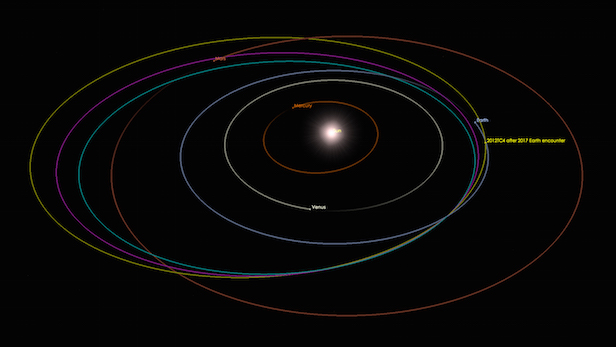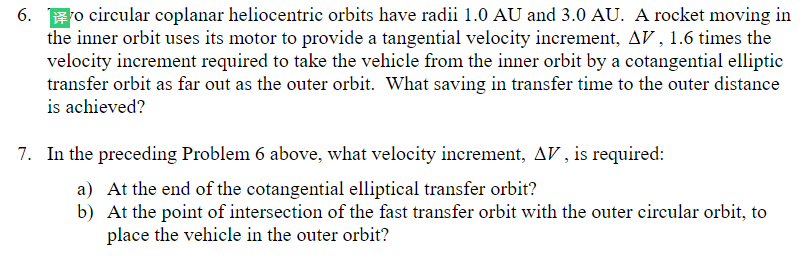A Sun-Centered Solar System
Heliocentric definition is - referred to or measured from the sun's center or appearing as if seen from it. How to use heliocentric in a sentence. Before reaching other planets, all space agencies first sent probes into heliocentric orbit. These probes collected data from the space environment and paved the way for interplanetary missions. Basically, any ship sent to any other planet will be in a heliocentric orbit after leaving Earth's sphere of influence.
The Earth-centered Universe of Aristotle and Ptolemy held sway on Westernthinking for almost 2000 years. Then, in the 16th century a 'new' (butremember Aristarchus) idea wasproposed by the Polish astronomer Nicolai Copernicus (1473-1543).
The Heliocentric System
In a bookcalled On the Revolutions of the Heavenly Bodies (that was publishedas Copernicus lay on his deathbed), Copernicus proposed that the Sun, not theEarth, was the center of the Solar System. Such a model is called a
Heliocentric Orbit
heliocentric system. The ordering of the planets known to Copernicusin this new system is illustrated in the following figure, which we recognize asthe modern ordering of those planets.| The Copernican Universe |
Retrograde Motion and Varying Brightness of the Planets
The Copernican system by banishing the idea that the Earth was the center ofthe Solar System, immediately led to a simple explanation of both the varyingbrightness of the planets and retrograde motion:- The planets in such a system naturally vary inbrightness because they are not always the same distance from the Earth.
- The retrograde motion could be explained in terms of geometry and a fastermotion for planets with smaller orbits, as illustrated in the followinganimation.
| Retrograde motion in the Copernican System |

Copernicus and the Need for Epicycles
There is a common misconception that the Copernican model did away with theneed for epicycles. This is not true, because Copernicus was able to ridhimself of the long-held notion that the Earth was the center of the Solarsystem, but he did not question the assumption of uniform circular motion.Thus, in the Copernican model the Sun was at the center, but the planets stillexecuted uniform circular motion about it. As we shall see later, the orbitsof the planets are not circles, they are actually ellipses. As a consequence,the Copernican model, with its assumption of uniform circular motion, stillcould not explain all the details of planetary motion on the celestial spherewithout epicycles. The difference was that the Copernican system required manyfewer epicycles than the Ptolemaic system because it moved the Sun tothe center.The Copernican Revolution
We noted earlier that 3 incorrect ideas held back the development of modernastronomy from the time of Aristotle until the 16th and 17th centuries: (1)the assumption that the Earth was the center of the Universe, (2) theassumption of uniform circular motion in the heavens, and (3) the assumptionthat objects in the heavens were made from a perfect, unchanging substance notfound on the Earth.
Copernicus challenged assumption 1, but not assumption 2.We may also note that the Copernican model implicitly questions the thirdtenet thatthe objects in the sky were made of special unchanging stuff.Since the Earth is just anotherplanet, there will eventually be a natural progression to the idea that the planets are madefrom the same stuff that we find on the Earth.
Copernicus was an unlikely revolutionary. It is believed by many that his book was only published at the end of his life because he feared ridicule and disfavor by his peers and by the Church, which had elevated theideas of Aristotle to the level of religious dogma.However, this reluctant revolutionary set in motion a chain of events that would eventually (long after his lifetime)produce the greatest revolution in thinking that Western civilization has seen.His ideasremained rather obscure for about 100 years after hisdeath. But, in the 17th century the work of Kepler, Galileo, and Newtonwould build on the heliocentric Universe of Copernicus and produce the revolution that would sweep away completely the ideas of Aristotle and replacethem with the modernview of astronomy and natural science. This sequence is commonly called the Copernican Revolution.
Been There, Done That: Aristarchus of Samos
There are many examples throughout history, including in moderntimes, where a theory, or a part of a theory, is proposed anddoesn't catch on initially but only later bears fruit--and possibly withlater proponent gaining credit that is really deserved by the originator. I think the example of Aristarchus is a poignant one.
This applies here because the idea of Copernicus was not really new!A sun-centered Solar System had been proposed as early as about 200B.C. by Aristarchus of Samos (Samos isan island off the coast of what is now Turkey). Aristarchus actually proposed that the Earth rotated on in addition to its orbitingaround the sun. Many of Aristarchus' writings were unfortunately lost.More importantly however, they did not survive long under theweight of Aristotle's influence and the 'common sense' of the time:
Heliocentric Orbit Shape
- If the Earth actually spun on an axis (as required in a heliocentric system toexplain the diurnal motion of the sky), why didn't objects fly off the spinningEarth?
- If the Earth was in motion around the sun, why didn't it leave behind the birds flying in the air?
- If the Earth were actually on an orbit around the sun, why wasn't a parallaxeffect observed? That is, as illustrated in the adjacent figure, where stars would appear to change their position with the respect to the otherbackground starsas the Earth moved about its orbit, because of viewing them from a differentperspective (just as viewing an object first with one eye, and then the other,causes the apparent position of the object to change with respect to thebackground).
| Parallax is larger for closer objects |
Heliocentric Orbital Motion
The parallax effect is there,but it is very small because the stars are so far away thattheir parallax can only be observed with very precise instruments.Indeed, the parallax of stars was not measured conclusively until the year 1838. Thus, the heliocentric idea of Aristarchus was quicklyforgotten and Western thought stagnated for almost2000 years as it waited for Copernicusto revive the heliocentric theory.

Note that Copernicus himself originally gave credit to Aristarchus in his heliocentric treatise, De revolutionibus caelestibus,where he had written, 'Philolaus believed in the mobility of the earth, and some even say that Aristarchus of Samoswas of that opinion.' Interestingly, this passage was crossed out shortly before publication, maybe because Copernicusdecided his treatise would stand on its own merit.
